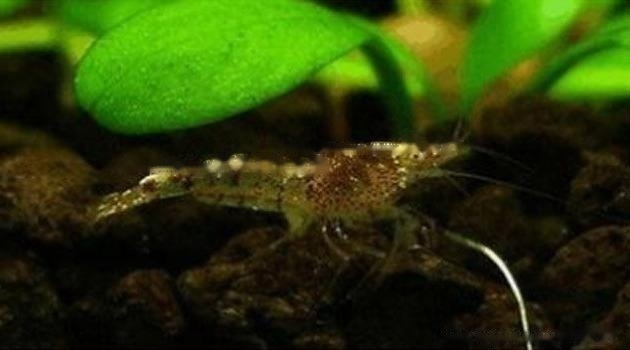Heteropoda new rice shrimp, belonging to the order Decapoda, the soft armor class, the new rice shrimp genus of the family Spoon finger shrimp. Heteropoda is not a specific species, it includes Heteropoda Korean subspecies, Heteropoda nominate subspecies, and Heteropoda Luoyang subspecies. Although they belong to the same category of new rice shrimp, they have their own characteristics and different origins. This species is widely distributed in Northeast China, North China, Jianghuai and Jiangsu, Zhejiang, Anhui, Fujian and Yunnan. A kind of spoon finger shrimp with large output, high economic value and strong adaptability.

1. Appearance characteristics of the new rice shrimp.
The frontal angle of the new rice shrimp is narrow in lateral view, and the base of the upper edge is slightly raised. The middle part is slightly inclined downward, and the end is raised upward again, slightly beyond the end of the 2nd segment of the 1st antennal peduncle to the end of the 3rd segment or slightly beyond; the upper margin has 15-21 teeth, and 2-3 teeth are located behind the orbit On the carapace of the margin, the end is about 1/3-1/4 toothless; the lower margin has 4-8 teeth. Buccal spurs on the lateral horns anterior to the carapace are clearly visible. There are 6-7 pairs of movable spines on the back of the caudal segment, with a pointed end, a short spine in the center of the back, and 5 pairs of spines at the end, and occasionally 4 pairs. The lateral spines are thicker and longer, about 4 times as long as the outer posterior spines. There are 4 pairs of thorns, the outer thorns are the shortest, and the rest are about the same length. The end of the preanal ridge is blunt, without spines, with a tuft of bristles at the top.
2. Habits and characteristics of new rice prawns
Most of them live in shallow water and aquatic grass areas along the shores of lakes, ponds, rivers and streams, and the yield is quite large . It is often distributed in the middle and lower reaches of streams in mountain streams, and likes to live along the banks of streams with slower flow rates. The distribution of this shrimp is often absent in upstream streams with higher altitudes or large water drops. Reproduction begins in spring and summer. Because of the high survival rate of larvae, fast growth and strong adaptability, this species reproduces in large numbers everywhere. Most of them are lakes and streams, which often become one of the main fishing targets. Live in mountain streams with clear water, cling to aquatic plants or climb rocks.
3. Feeding methods of new rice and shrimp
1. Preparation
Prepare at home A good shrimp tank for raising shrimp, dry the water well. Shrimp nests, aquatic plants, heating rods, filters, etc. should be placed in the tank. The more complex the environment in the tank, the better, so it is easy to hide, and they are not good at attacking, but when the shrimp are small in many places, they will inevitably be eaten by other shrimp when they unshell. Rice shrimp can be raised with fish, which are small in size, or with snails. In this link, it is worth noting that the water passing must be slow, and there must be a slow process. Even if the shrimp purchased in the same city, the water quality of each tank is different, adapting to PH, GH and some toxins requires an adaptation. The slower the process, the better, and it also reduces the spasms of the shrimp body caused by the temperature difference. Most of the dead shrimp are overwater.
2. Daily
For the hardness of water body, if there is a reagent test, according to German standards, such as Decai reagent, GH value is 8-15, this The range is ideal, too high or too low is not very good, whether it is not good for the hair color of the shrimp body or the growth of the shrimp. Rice and shrimp also eat shrimp food, and if they are fed diligently, shrimp will grow faster, but it is necessary to keep the water in the tank clean. They also like to eat spinach and algae in the tank. They are also masters of algae removal. Feeding should be adapted to local conditions, and the amount of feeding should be determined according to the number of shrimps. Generally, it is best to eat within one day. If you cannot eat it, take it away, and continue to feed it the next day. The first choice is sinking, and floating feed is not considered.
3. Breeding
As long as the water temperature and water quality are up to standard, the rice shrimp will report eggs at any time. Rice and shrimp do not need to be isolated, keep the environment in the tank good, and there will be small shrimps in about 20 days. No matter what kind of rice shrimp it is, the small shrimp it gives birth to are all white, and the pattern and color will not appear until about two weeks. The time from juvenile shrimp to adult shrimp is about 2-2 and a half months. The adult body length is about 1.5-1.8 cm. Female prawns hold eggs. After 20-25 days, there will be juveniles.
![[Dog Training 5] The training method of pet dog dining etiquette](/static/img/12192/12192_1.jpg)




